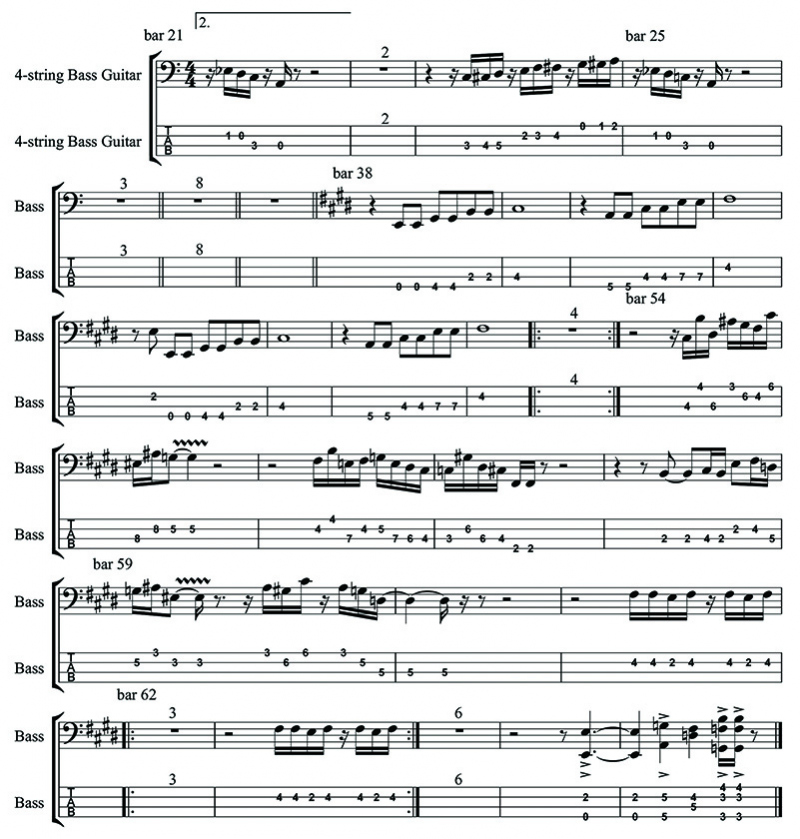Deep Thinking: Weather Report’s Teen Town (Part 2)
Deep Thinking: Weather Report’s Teen Town (Part 2)
Admittedly it’s been a while now, but in the last NZM issue we tackled one of Jaco Pastorius’ compositions for Weather Report, Teen Town. Having got to bar 20, there was a repeat to bar 5 but, when you get to bar 13 this time, you go to the second time bar, which I have numbered bar 21.
There is a lot of syncopation in the second half, as well as a lot of jazz/fusion styled chromaticism and it is thus harder than the first half. Therefore, I’ll give my usual advice – practice slowly, don’t get frustrated and even take it one bar at a time.
Bar 21 has a first finger pull off with the Eb moving to an open D. Bars 24 and 25 are simple chromatic phrases followed by the Eb, D, C and A phrase as in bar 21. There follows a 12 bar rest in which the whole piece gets softer with no bass. The bass re-enters at bar 38 with some bars of E and A major pentatonic (notice that the piece has now changed to the key of E major) and then another eight bars rest.
Bar 54 can be played between frets 4 and 6 with fretting finger 1 barring across fret 4 to play the low C# up to B. Keep a close eye on the notes that have ‘accidentals’ (notes outside the written key and with a sharp, natural or flat sign). Bar 55 has a wiggly line above the G natural. This means vibrato, which can be done on a fretted bass but is much easier on a fretless. Bars 56 and 57 are easy rhythmically but, again, watch out for the accidentals.
The same can be said for bars 58, 59 and 60. They may look tricky note-wise but it’s the placement of the rhythm that is the challenge. There is a three-bar rest at bar 62 before you repeat bar 61. This is repeated once more and then there is a six-bar rest. The final two bars have double and triple stops that are played with a great deal of attack – that’s why the little arrows have been used. Follow the tablature for the fingering of the chords.
I saw Jaco play this once and he used his thumb and his first two fingers to play the last two chords. For the fingering of the whole piece, I recommend using the tablature, as this is how I fingered it and taught it to my students at the London College of Music, and at the University of Otago. Check it out on YouTube as well. Good luck and see you next time.
Dr. Rob Burns is an Honorary Associate Professor in Music at the University of Otago in Dunedin. As a former professional studio bassist in the UK, he performed and recorded with David Gilmour, Pete Townsend, Jerry Donahue, Isaac Hayes, James Burton, Ian Paice and many more, as well as playing on the soundtracks of numerous UK television shows. Rob is currently a member of Dunedin band The Verlaines, and is on three progressive rock albums released in 2020. A further album has just been released on Seelie Court Records (UK), with another due in 2022.

